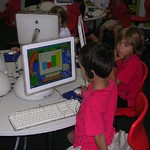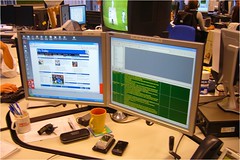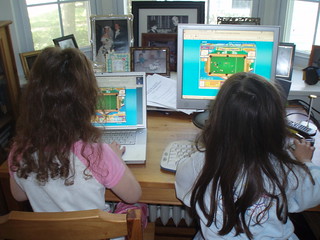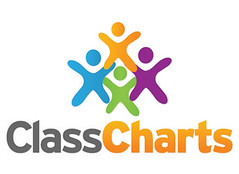In each case I have kept the text of the DfE’s announcement, and then added my thoughts under the heading “Applying this to Computing and ICT”.
Today: A scoring system.
In each case I have kept the text of the DfE’s announcement, and then added my thoughts under the heading “Applying this to Computing and ICT”.
Today: A scoring system.
In each case I have kept the text of the DfE’s announcement, and then added my thoughts under the heading “Applying this to Computing and ICT”.
Today: The Ladder. Professor Diana Laurillard has informed me of a new course that is going to be run for teachers and others with an interest in how ICT is being used in primary education in various countries. I think it sounds very interesting. Here’s the official blurb:
Professor Diana Laurillard has informed me of a new course that is going to be run for teachers and others with an interest in how ICT is being used in primary education in various countries. I think it sounds very interesting. Here’s the official blurb:
This is to announce a new course on ICT in Primary Education, to run as a MOOC (a massive open online course), hosted by the University of London.
Nearly four years ago I published an article called 25 Features of Outstanding ICT Lessons. I thought it was time to update that for the new Computing curriculum. Perhaps unsurprisingly, the original 25 have only needed minor modification, where they have needed modifying at all. Good teaching is, after all, good teaching.
By ‘outstanding’ I do not mean the Ofsted definition of that word, which I feel is somewhat narrow. Nevertheless, I have included Ofsted’s criteria in the list below, with a few comments of my own.
 Lots of schools with computer suites are getting rid of them by turning them into ordinary classrooms. The reason is that with mobile technology such as tablets, and initiatives like Bring Your Own Device (BYOD), there is no longer any need for a computer suite.
Lots of schools with computer suites are getting rid of them by turning them into ordinary classrooms. The reason is that with mobile technology such as tablets, and initiatives like Bring Your Own Device (BYOD), there is no longer any need for a computer suite.
But getting rid of a computer suite is just one option: there are several others.
 In the context of technology, the main issue is that not enough girls go into computer science studies beyond the statutory provision, or computer-related jobs. Various figures are cited, but it seems to be generally agreed that only around 16 or 17% of students in undergraduate courses in Computer Science in the UK are female, and only around 27 or 28% of employees in information technology jobs are women — a figure that is true for both the UK and the USA. So what can be done about it?
In the context of technology, the main issue is that not enough girls go into computer science studies beyond the statutory provision, or computer-related jobs. Various figures are cited, but it seems to be generally agreed that only around 16 or 17% of students in undergraduate courses in Computer Science in the UK are female, and only around 27 or 28% of employees in information technology jobs are women — a figure that is true for both the UK and the USA. So what can be done about it? There are lots of assessment grids and approaches being developed for the new Computing curriculum, which is wonderful. But how do you know which one is right for you? In this article I provide a few principles of assessment which I hope will provide some food for thought. These come partly from a course I’ve been teaching on the subject.
There are lots of assessment grids and approaches being developed for the new Computing curriculum, which is wonderful. But how do you know which one is right for you? In this article I provide a few principles of assessment which I hope will provide some food for thought. These come partly from a course I’ve been teaching on the subject.
These are general principles which I have applied to the context of computing and ICT.
 With the new Computing Programme of Study looming on the horizon, schools do not have an enormous amount of time left in which to get ready for it. What practical steps can you take in order to be up and running in September?
With the new Computing Programme of Study looming on the horizon, schools do not have an enormous amount of time left in which to get ready for it. What practical steps can you take in order to be up and running in September? At first sight, it seems bizarre that despite the fact that many teachers urgently need professional development, and time, in order to be ready to teach Computing in September, headteachers are not always allowing them to attend courses during school time. A business planning approach by ICT leaders in school could help.
At first sight, it seems bizarre that despite the fact that many teachers urgently need professional development, and time, in order to be ready to teach Computing in September, headteachers are not always allowing them to attend courses during school time. A business planning approach by ICT leaders in school could help.
You may think that a business plan is not relevant to you because you’re not running a business. But actually, many of the things that a business has to do, like marketing and budgeting – and planning – are what you do have to do in one form or another. All a business plan is is a statement of where you would like to be at a certain point in the future, and what steps you need to take in order to get there.
 With the new Computing Programme of Study looming on the horizon, there are a number of conferences and other events coming up in the near future. Here’s a list of some of them. The Education Show isn’t specifically about ICT or Computing, but there are seminars in those areas so it’s definitely worth looking at.
With the new Computing Programme of Study looming on the horizon, there are a number of conferences and other events coming up in the near future. Here’s a list of some of them. The Education Show isn’t specifically about ICT or Computing, but there are seminars in those areas so it’s definitely worth looking at. I think all sweeping generalisations are bad, including the one I am about to make. But you know what? I think I’ll make it anyway, and here it is:
I think all sweeping generalisations are bad, including the one I am about to make. But you know what? I think I’ll make it anyway, and here it is:
A school that says they are implementing a tablet programme is doomed to failure.
You can substitute “ipad”, “Bring your own device” or some other similar kind of term for “tablet”, the result is the same.
Updated! Discounts, competitions, news of events coming up, commentary, and advice about internet safety! And it's completely free!
Here’s what this issue contains:
 I had the pleasure of attending a summit at the Royal Society of Arts last week. Entitled Skills for the 21st Century Summit, the event was designed to launch the “Year of Code” with as much razzmatazz as could be mustered.
I had the pleasure of attending a summit at the Royal Society of Arts last week. Entitled Skills for the 21st Century Summit, the event was designed to launch the “Year of Code” with as much razzmatazz as could be mustered.
And it worked. There was a great buzz throughout the day, and I came away buzzing and full of enthusiasm – though I suspect not for reasons that the organisers had in mind.
 Sponsored article
Sponsored article Seating charts make a real difference to the classroom learning environment in terms of teacher effectiveness and student attainment. Through using a seating chart, the teacher is imposing their authority before the lesson has even begun and making it clear to the students that the classroom is the teacher’s territory and they are in control of it. By using their knowledge of students and putting careful thought into the design of the seating chart the teacher can minimise negative interactions between students and take advantage of peer-to-peer learning strategies.
 In 1981 the then Conservative government announced that the Department of Trade and Industry would provide funding for one microcomputer in every school. Throughout the ensuing three decades there has hardly ever been a year when there has not been some earmarked or ring-fenced funding for ICT in schools in England. But in 2014 we are in new territory. The Harnessing Technology Grant, which for several years was the main source of devolved funding to support ICT in schools, is no more and many schools will have to make do with the ICT equipment they already have rather than spending on the latest technology. Yet teachers should still aim to make the very best use of the resources available to them and aspire to excellent teaching with ICT.
In 1981 the then Conservative government announced that the Department of Trade and Industry would provide funding for one microcomputer in every school. Throughout the ensuing three decades there has hardly ever been a year when there has not been some earmarked or ring-fenced funding for ICT in schools in England. But in 2014 we are in new territory. The Harnessing Technology Grant, which for several years was the main source of devolved funding to support ICT in schools, is no more and many schools will have to make do with the ICT equipment they already have rather than spending on the latest technology. Yet teachers should still aim to make the very best use of the resources available to them and aspire to excellent teaching with ICT.
(c) Terry Freedman All Rights Reserved